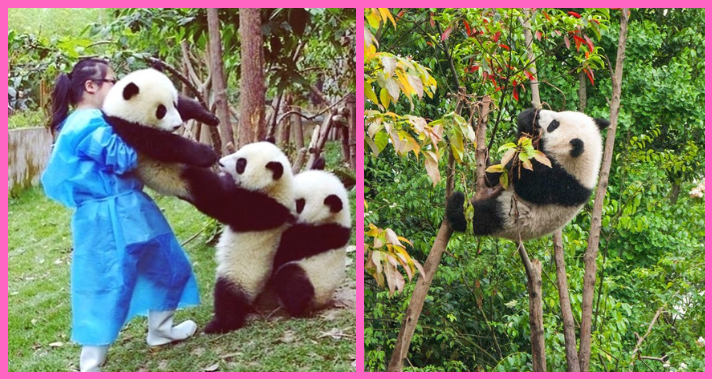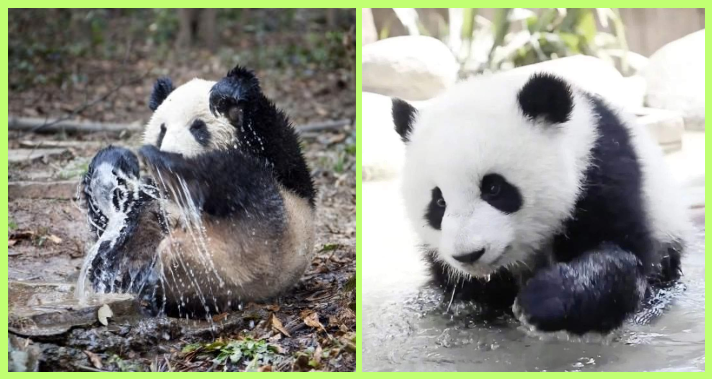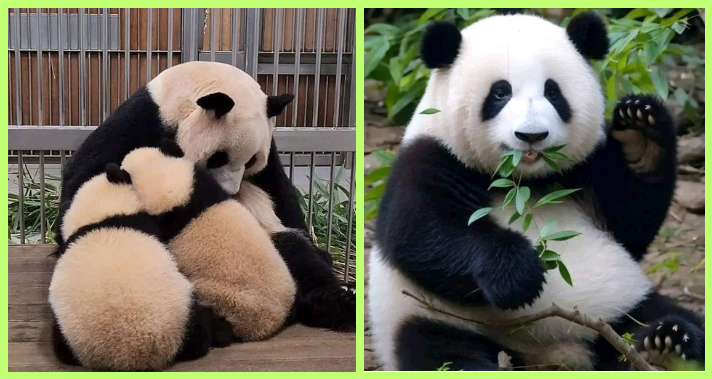Pandas may be regarded as fluffy and lazy, but they are naturally clean animals. They live in forests and mountains and are often covered in mud, wet foliage and rough terrain. However, they somehow manage to remain surprisingly clean. What is even more interesting, is that pandas don’t need water baths as do many other animals. Instead, they use natural ways and their own behavior to ensure that their fur is free of dirt, pests, and bad smells. In this blog, we learn how panda bears can maintain the level of cleanliness without using the water baths, and how they keep themselves clean in the wild due to their lifestyle and the anatomical features of their body.
Pandas Cleanliness
The panda’s fur does not resemble normal fur. It is viscous, oily and waterproof in nature. This special texture prevents water, mud and dust from sticking to their body easily. The oily membrane on their coat acts like a waterproof membrane keeping moisture out and making it more difficult to get dirt to penetrate deep into their coat structure. Due to this, even when pandas lie in the ground or rub against wet plants, the fur does not absorb too much dirt. The black and white fur also helps in reflecting sunlight and prevent the growth of bacteria. Their hair is coarse and outer and covers up a soft layer underneath. The inner layer ensures they are warm and the outer layer plays a role in preventing dirt and water. Their natural fur structure makes it so that they don’t have to clean themselves with water.
Another interesting thing that pandas do to clean themselves is rolling on various things. They rub themselves against grass, rocks, tree trunks and even snow. This movement assists in loosening the dirt, dead hair and insects stuck in their fur. The ground acts like a natural brush, scraping all the things that do not belong to them on their coat. Pandas also roll in leaves or dry soil and the particles absorb moisture and oil from their fur. Later on when they shake their bodies or stand up, the dried dirt falls off with the dust and small pests. This is an inbuilt dry cleaning mechanism for the body, which keeps it fresh without the use of water.
#1. Get back my panda

#2. Looking in the mirror

Despite their heavy and oversized body, the panda is flexible enough to clean its body with its tongue and paws. They use their fore-legs to scratch or clean dry leaves, small insects or dirt from their coat. Their claws tend to look like they are designed for climbing but they are also handy tools for grooming purposes. Their tongue is used to clean those parts they are able to reach, such as their paws or chest. Their tongue is slightly roughened which helps to pull off dirt and small particles from the fur. This grooming habit makes their fur clean and eliminates the possibility of skin complications.
#3. Nature’s way of showing gentleness
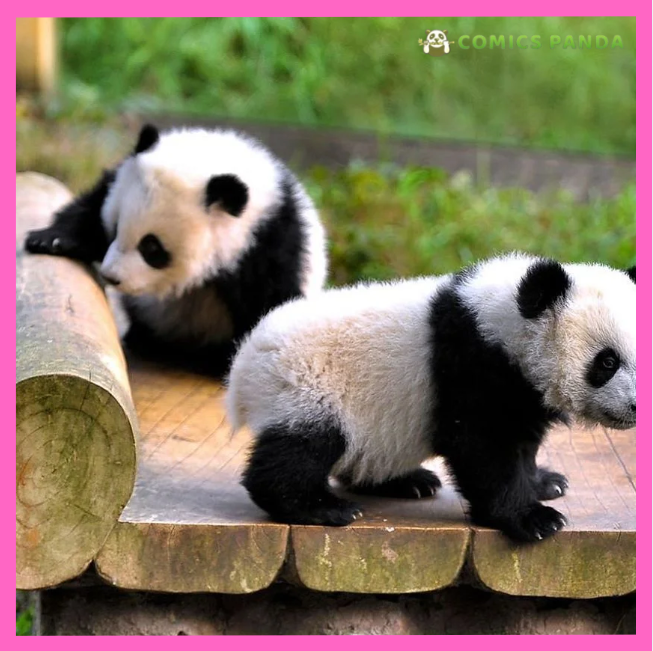
#4. Floating through life like a panda cloud
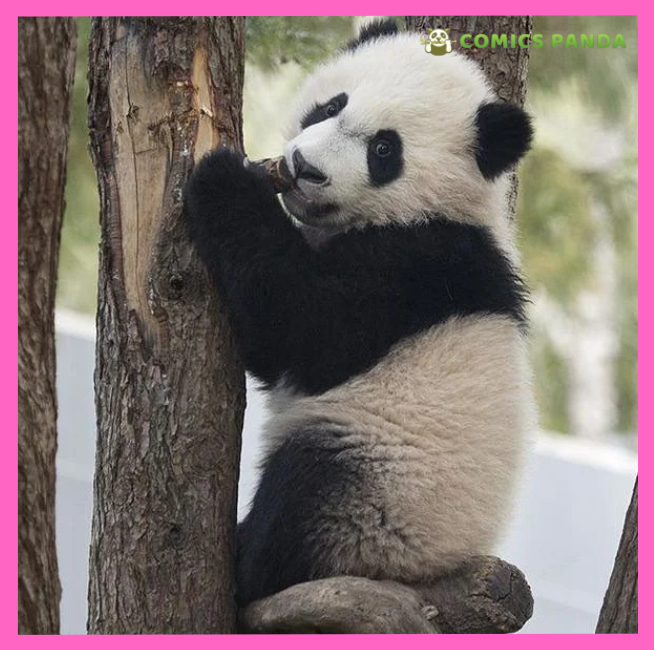
Even the food pandas consume helps them to keep clean. Pandas consume bamboo for a majority of their life. Bamboo is rich in fiber, and helps clean their digestive system and keep their body from the inside. A healthy body means less sweat and less odors which reduces the panda overall cleaner. Their feces are mostly composed of bamboo fiber, dry and not sticky. As a result, their living areas do not get soiled easily. It also prevents the fur from adhering with any unwanted moisture or bacteria. They have clean digestion habits that lead to a cleaner environment around them.
#5. Just a panda being perfectly panda

#6. World’s cutest daydreamer

Pandas prefer cool areas, but they do not stay in muddy or dirty water for long periods of time. They do not rest in ponds or lakes as do some animals. Instead, they prefer dry rocks, tree roots or grassy areas for resting. This helps to keep their fur off of wet soils and keeps dirt from sticking to their bodies. They usually take shelter under thick bamboo, caves or tree cover during rains. So, by not doing things in puddles or muddy surfaces, they eliminate the need to wash afterward. This natural instinct is part of their system of keeping themselves clean most of the time. In winter, Panda has a very efficient natural cleaner, snow. They roll in snow so that their bodies cool down and their fur remains clean. Oil and dirt stick to snow when it falls and the melting snow washes the dirt off their bodies too. It is a cheap but efficient way of cleaning.
#7. This is what soft bravery looks like

#8. A little panda magic in every moment

In the summer, pandas remain in higher areas of mountains where it is cooler and mud is less likely to be found on the ground. They roll around on dry grass or in a cooler ground to take off the sweat and dirt. These habits help them get fresh all year long. Another reason why panda stays clean is because of its solitary lifestyle. They do not live in big groups. Hence, they are away from fights, bites, and physical contact that can result in wounding or contamination. Living alone lowers the exposure to diseases and parasites. It also means the fur gets clean for longer periods of time. They rarely interact closely aside from mating season or between mother and cubs. This limited interaction also keeps the temperature hygienically healthy.
#9. Living proof that gentle can be strong

#10. No stress and just relax

Pandas occupy higher altitudes where the temperature is cool. These types of areas have fewer insects and parasites like ticks or fleas than warmer forests. Their fur is thick and they live in cold habitat, so there is less of a chance for insects to attach themselves to the fur. It is also the fact that their grooming and scent rubbing keeps small pests away. Unlike many animals that need to be given water baths to remove insects, panda relies on their climate, fur and behavior to naturally protect their skin from harm. Pandas are not fond of water baths as often as they would require to stay clean. They rub themselves on the ground, on trees, clean their fur, smell natural scents and avoid dirty places. All these habits will keep them fresh, dry and healthy. If you enjoyed this blog, and moreover, just don’t hesitate to share it with others and visit our website for more wildlife stories because each of them is interesting.

